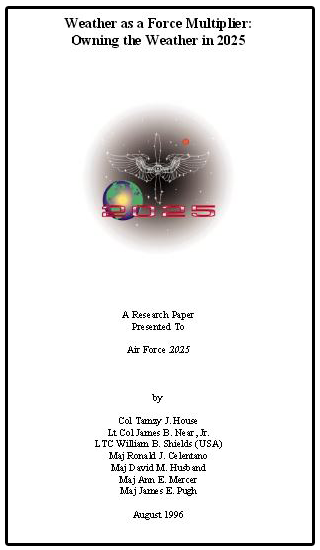The more people get over their disdain for Al Gore and begin to do honest investigation, the more they will be able to recognize well spun propaganda from Big Oil And The Geoengineers. Arctic ice is plummeting overall and the data to prove that is beyond any doubt or dispute. Extremely deceptive headlines are pumped out by powers who want to make the public believe all is well on our planet when the truth is anything but. Facts and figures are spun, distorted, or completely omitted in order to assemble a specific headline that sounds convincing to those that have not done a bit of objective research, unfortunately this includes most of the American population. If you want the truth, look at the facts. The article is the very latest data on the overall Arctic ice scenario.
Dane Wigington
Geoengineeringwatch.org
Arctic sea ice “recovers” to its 6th-lowest extent in millennia
Source: The Guardian
Arctic sea ice extent remains at remarkably low levels despite misleading reports of a “recovery”
As Suzanne Goldenberg reported in The Guardian yesterday, Arctic sea ice appears to have reached its annual minimum extent, at approximately 5.1 million square kilometers. This is the 6th-lowest extent since the satellite record began in 1979.
But in fact, scientists have also reconstructed Arctic sea ice extent data much further into the past. For example, Drs. Walsh & Chapman from the University of Illinois have estimated sea ice extent as far back as the year 1870 using a vast array of data (for example, records kept by the Danish Meteorological Institute and Norwegian Polar Institute, and reports made from ocean vessels). While climate contrarians will sometimes try to argue that Arctic sea ice extent may have reached similar lows to today’s in the 1920s or 1930s–1940s, the data compiled by Walsh & Chapman tell a very different story.
 Average July through September Arctic sea ice extent 1870–2008 from the University of Illinois (Walsh & Chapman 2001 updated to 2008) and observational data from NSIDC for 2009–2013.Going back even further in time, a study published in the journal Nature in 2011 used a combination of Arctic ice core, tree ring, and lake sediment data to reconstruct Arctic conditions going back 1,450 years. The result is shown below.
Average July through September Arctic sea ice extent 1870–2008 from the University of Illinois (Walsh & Chapman 2001 updated to 2008) and observational data from NSIDC for 2009–2013.Going back even further in time, a study published in the journal Nature in 2011 used a combination of Arctic ice core, tree ring, and lake sediment data to reconstruct Arctic conditions going back 1,450 years. The result is shown below.
 Reconstructed Arctic sea ice extent over the past 1,450 years, from Kinnard et al. (2011)A study published in 2010 by 18 leading Arctic experts examined Arctic records throughout geologic history and concluded,
Reconstructed Arctic sea ice extent over the past 1,450 years, from Kinnard et al. (2011)A study published in 2010 by 18 leading Arctic experts examined Arctic records throughout geologic history and concluded,
“The current reduction in Arctic ice cover started in the late 19th century, consistent with the rapidly warming climate, and became very pronounced over the last three decades. This ice loss appears to be unmatched over at least the last few thousand years and unexplainable by any of the known natural variabilities.”
Thus the scientific data and literature indicate that this year’s minimum Arctic sea ice extent is not just the 6th-lowest in the past 34 years, but most likely the 6th-lowest in at least the past few thousand years.
The current Arctic sea ice decline is remarkably rapid, and often referred to as a “death spiral.” As Dr. Julienne Stroeve from the National Snow and Ice Data Center (NSIDC) told The Guardian,
“Overall, the Arctic has lost about 40% of its sea ice cover since 1980. Most scientists believe the Arctic could be entirely ice-free in the summers by the middle of the century – if not sooner.”
The Arctic ice has also been thinning rapidly, losing approximately 75 percent of its summer volume since 1980.
So what to make of the many claims over the past two weeks that the Arctic sea ice is “recovering”? These counter-factual arguments primarily originated from David Rose at the Mail on Sunday, whose article Bob Ward accurately described as containing “embarrassing errors” to the extent of being a “humiliation” for the Mail on Sunday.
Unfortunately many other media outlets (the Telegraph and Fox News, for example) assumed David Rose to be an accurate source of climate information – despite his long track record of getting nearly everything he says with regards to climate change wrong – and echoed Rose’s embarrassing errors. Rush Limbaugh engaged in what Graham Readfearn has described as ‘a bad game of Chinese whispers,’ amplifying Rose’s errors further by wrongly asserting,
“Now, if you haven’t heard this, the ice at the North Pole, arctic ice, is at a record amount this early in the post-summer season.”
Sadly, the climate contrarian media echo chamber (which has been working overtime in advance of the publication of the next IPCC report) has taken factually inaccurate reporting and twisted reality even further, asserting that the 6th-lowest Arctic sea ice extent in millennia is “a record amount.”
In reality, because last year’s Arctic sea ice minimum shattered the previous record low, and the ice had declined the previous two years as well, statistically speaking a short-term ‘recovery’ this year was likely to happen. In fact, it was predicted by most Arctic climate experts.
However, when we examine the long-term trend in the Arctic sea ice extent, it becomes clear that contrarian declarations of a “recovery” are based on viewing the data through Rose-colored glasses.
 September Arctic sea ice extent data since 1980 from NSIDC (blue diamonds). “Recovery” years, meaning years when the sea ice extent is greater than the previous year, are highlighted in red to illustrate how climate contrarians view the data.Perceptions of the Arctic can be used as a litmus test to distinguish between skepticism and denial. There is simply no question that Arctic sea ice is in the midst of a rapid decline, at rates and to minimum extents unseen in millennia. The body of scientific research also clearly shows that most of that rapid decline is due to human influences on the climate. There’s simply no sense in denying the rapid human-caused decline of Arctic sea ice; doing so is a clear indicator of a lack of skepticism and abundance of denial.
September Arctic sea ice extent data since 1980 from NSIDC (blue diamonds). “Recovery” years, meaning years when the sea ice extent is greater than the previous year, are highlighted in red to illustrate how climate contrarians view the data.Perceptions of the Arctic can be used as a litmus test to distinguish between skepticism and denial. There is simply no question that Arctic sea ice is in the midst of a rapid decline, at rates and to minimum extents unseen in millennia. The body of scientific research also clearly shows that most of that rapid decline is due to human influences on the climate. There’s simply no sense in denying the rapid human-caused decline of Arctic sea ice; doing so is a clear indicator of a lack of skepticism and abundance of denial.
Source: The Guardian










































































































































